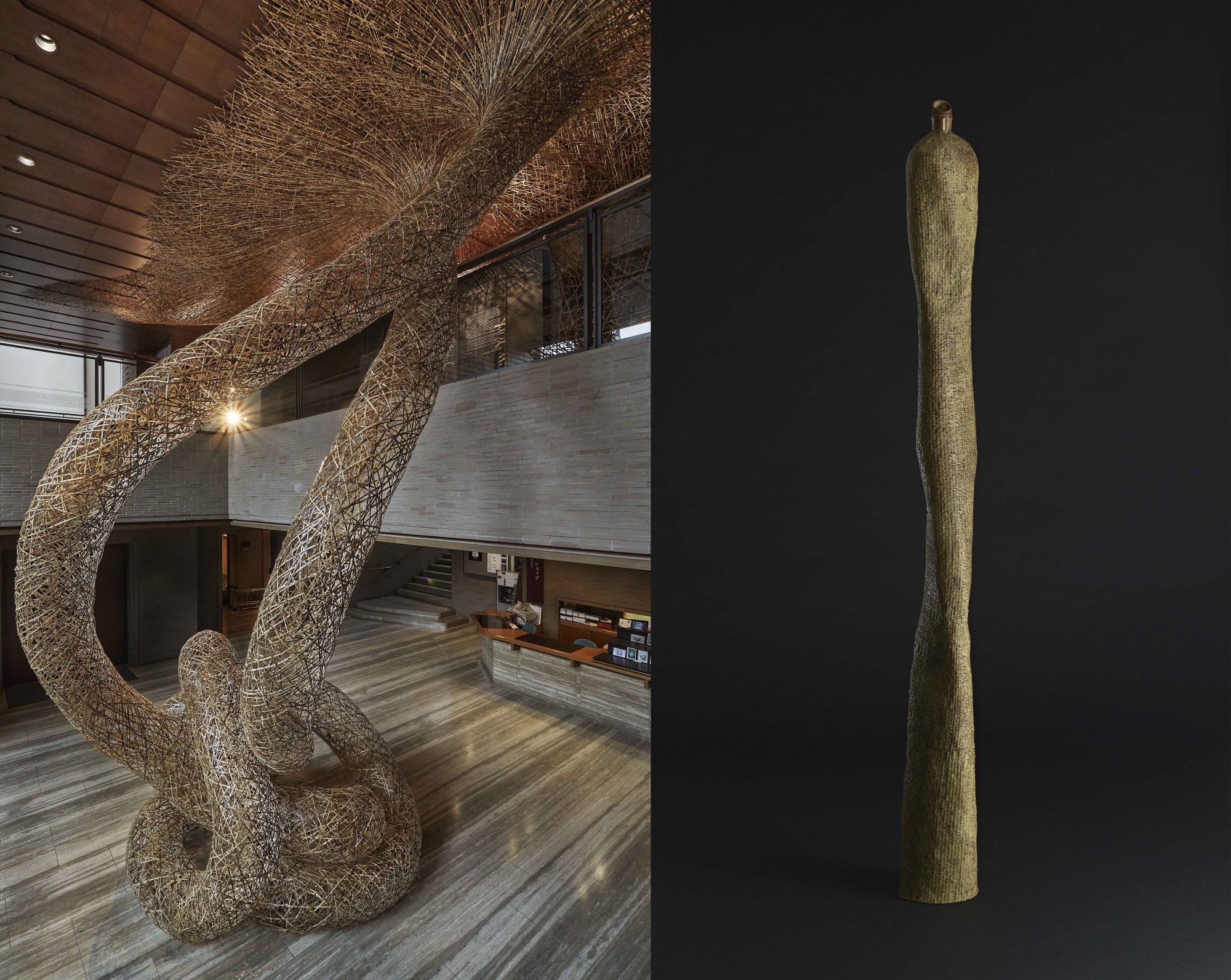The Abbey Collection of bamboo arts and crafts, the 20-year loving labor of New York collectors Dianne and Arthur Abbey, attracted 470,000 visitors when it showed at the Metropolitan Museum of Art, New York, in 2017-18. A traveling exhibition of some 75 pieces, which is now making a stop at The Museum of Oriental Ceramics, Osaka, makes for captivating and edifying viewing.
Japan's ubiquitous bamboo is unsurprisingly storied. Woven artifacts evidence from the later Jomon Period (10,000-200 B.C.). The ancient nation- and culture-building texts, the "Kojiki" (Records of Ancient Matters) and "Nihon Shoki" ("The Chronicles of Japan"), record bamboo knives and combs with magical powers. The oldest surviving baskets are 8th-century offering trays kept in the Shosoin treasure house in Nara. Bamboo was obviously crucial to the 10th-century prose narrative "Taketori Monogatari" ("Tale of the Bamboo Cutter"). Tea masters of the 15th century revered seemingly artless utensils in their burgeoning spiritual practice. Emperors were gifted the choicest of bamboo wares.
But it was only comparatively recently that bamboo crafting became considered fine art. The exhibition's chronology from the 19th century indicates how this came about by participation in Japan's National Industrial Exhibition and the world fairs.



















With your current subscription plan you can comment on stories. However, before writing your first comment, please create a display name in the Profile section of your subscriber account page.